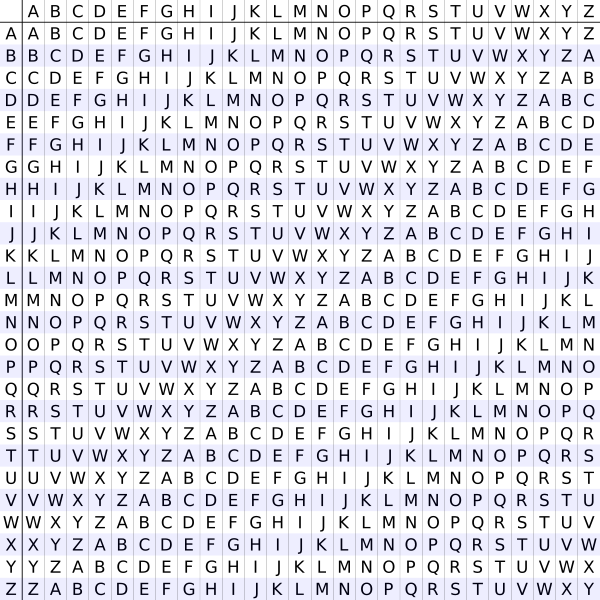![600px-Vigenère_square_shading.svg[1]](https://mysteriouswritings.com/wp-content/uploads/2012/05/600px-Vigenère_square_shading.svg1_-150x150.png) The two parchments, which are part of the mystery surrounding Rennes le Chateau, have fascinated many. They contain hidden messages of which their meanings are constantly debated and discussed. Even after their release many years ago, they still entice.
The two parchments, which are part of the mystery surrounding Rennes le Chateau, have fascinated many. They contain hidden messages of which their meanings are constantly debated and discussed. Even after their release many years ago, they still entice.
One of the parchments, commonly referred to as the Grand or Large Parchment, employed the Vigenere cipher as part of its decoding process. This specific method of encoding dates back to 1553. Building upon previous cipher methods (tabula recta and the alberti cipher disc), Giovan Battista Bellaso explained this technique in the book La Cifra del Sig. Giovan Battista Bellaso. Later, in 1586, Blaise de Vigenere described a similar method known as the autokey cipher. Confusion over the ciphers led to the misnaming or misattributing the cipher by Bellaso to Vigenere.
The cipher most often uses a table of alphabets. The entire alphabet is written 26 times with each line beginning with the following letter from the row above and wrapping around. By use of a Keyword, each letter is encrypted by a series of Caesar shift alphabets.
For example, using the above table, if CODE was to be encrypted and the Keyword was FIND, the cipher text would be HWQH. The first letter of CODE, C, is taken along the top. Using the first letter of the Keyword, F(down the side), follow in the row to the first letter of the cipher text, H. This letter is found at the vertical and horizontal intersections of C and F in the table. To decode HWQH, a person would use the Keyword and find the encrypted letter in the same row. He would then look up to see the corresponding letter written at the top.
Once thought to be indecipherable, it has been realized that short Keywords lead to easy cracking of the code. Repetition of a sequence of letters within the encoded phrase would hint at the length of the key and then be treated as separate simple substitution codes of which to decipher.
However, if the Keyword or Phrase is as long as the encrypted message, picked totally at random, used only once, and kept secret, the Vigenere cipher would be considered like the indecipherable One Time Pad.
The Vigenere method can also be looked at mathematically. For instance, if the above’s key and cipher text are known, then the message can be decoded in the following way:
Assign a number to each letter. Normally, 0=A, 1=B, and so on. So the cipher text of HWQH would be 7-22-16-7 The keyword of FIND would be 5-8-13-3
Subtracting the value of the keyword from the cipher text value will reveal the word CODE in this example. If a negative number is provided, it wraps around. Say the cipher text was BWEG, 1-22-4-6. The third computation would produce a negative (4-13= -9). Since the alphabet is 26 letters long; 26 is added and provides the value of 17 for the letter R. (BWEG=WORD)
The cipher text, which is part of the Large Rennes le Chateau parchment, involved 128 letters. These letters were gathered from 140 extra letters added to verses 12:1-11 of the Gospel of John written on a piece of parchment. Twelve of the letters, found in the center of the 140, spelled AD GENESARETH (To Genesareth/Sea of Galilee) and were not used in the decoding process.
Keywords, MORTEPEE (for the first time through the vigenere cipher) and a reverse inscription containing 119 letters from a tombstone (with an additional nine letters from another stone) were used. The 128 letters went through two Vigenere ciphers and additional decoding methods to finally provide a message which are most often written out as:
Shepherdess no temptation poussin and teniers hold the key pax 681 by the cross and this horse of God I finish this guardian at midday blue apples.
The understanding for this ‘hidden message’, along with one revealed on the small parchment, remains publically unknown.

